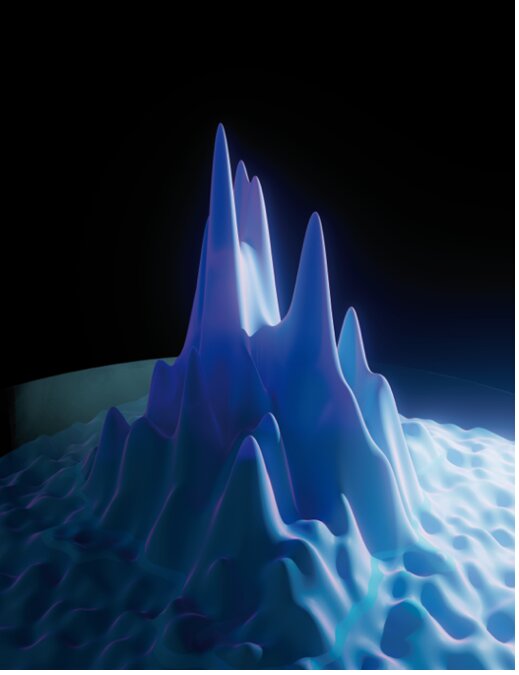A Quantum Microscope in Solid-State: Manipulating Wave Functions of Atomic Quantum Dots in Silicon
In recent decades, scientists and engineers have been dedicated to advancing technologies harnessing quantum mechanical effects, including the development of quantum microscopes. These specialized microscopy tools enable in-depth exploration of the characteristics of quantum particles and states.
A breakthrough in this domain comes from researchers at Silicon Quantum Computing (SQC)/UNSW Sydney and the University of Melbourne, who have introduced a novel solid-state quantum microscope capable of manipulating and examining the wave functions of atomic qubits in silicon. Published in Nature Electronics, the microscope is an integration of ion implantation and atomic precision lithography techniques.
Benoit Voisin and Sven Rogge, the researchers behind the study, emphasized the significance of understanding qubit wave functions for efficient quantum circuit construction. They explained, “Qubit device operations often rely on shifting and overlapping the qubit wave functions, which relate to the spatial distribution of the electrons at play, so a comprehensive knowledge of the latter provides a unique insight into building quantum circuits efficiently.”
Conventionally, obtaining spatial information about wave functions during qubit device measurements has been challenging, as these measurements rely on fixed charge sensing of the entire quantum state. The researchers addressed this limitation by incorporating a scanning tunneling microscope (STM) into their quantum microscope, allowing direct access to the complete spatial extent of the quantum state. The SQC/UNSW Sydney laboratory had previously focused on manufacturing qubit devices and developing scanning tunneling microscopes to image qubit wave functions concurrently, particularly using individual phosphorus atoms embedded in silicon.
The researchers’ latest work aimed to unite these distinct research efforts into a cohesive platform, creating a quantum microscope capable of both mapping and controlling atomic qubits with local electrodes in a single device.

“A quantum microscope represents a tool wherein arrays of atoms can be precisely engineered, with each atom, or qubit, subject to local control and measurement,” explained Voisin and Rogge. “Similar microscopes exist in the cold atom community, utilizing laser technology in a vacuum. Our solid-state quantum microscope closely resembles a transistor, with local electrodes defining the source and gate sides. The scanning tunneling microscope (STM) tip acts as a drain, exhibiting picometer resolution as it moves from qubit to qubit, scanning their wave functions.”
The researchers achieved the creation of this new quantum microscope by merging two distinct techniques. Specifically, they employed atomic precision lithography to introduce dopant atoms and more conventional ion implantation techniques to fabricate electrodes for their device. This pioneering approach to quantum microscope fabrication originated at UNSW.
“Qubits are defined using the atomic precision manufacturing technique by incorporating a few phosphorus atoms in small patches of desorbed hydrogen at the silicon surface, near the source electrode,” explained Voisin and Rogge. “Unlike typical STM experiments on conductive substrates, our microscope operates on insulating silicon. We designed a light-assisted protocol to initially stabilize the STM tip before mapping out the qubit wave functions.”
The researchers’ microscope effectively utilizes the STM tip as a movable electrode, offering significant advantages. Notably, this approach simplifies the collection of large qubit array measurements without the need for an increasing number of fixed sensors, allowing entire arrays to be measured using a single STM tip. “Directly mapping out qubit wave functions during device operation provides invaluable predictive insights on optimizing device design as we scale, such as adjusting distances and orientations between qubits,” said Voisin and Rogge.
“Consequently, in the manufacturing of complete circuits using the atomic qubits we engineer, our quantum microscope will accelerate cycles for enhanced device performance.” The integration of atomic precision lithography and ion implantation, typically conducted in distinct laboratory conditions, represents a notable achievement for the team. The study by Voisin, Rogge, and their colleagues opens the door to innovative possibilities in scanning tunneling microscopy (STM) and quantum microscopy, introducing a novel approach to fabricating quantum microscopes. This proposed method could potentially be applied to microscopes based on other solid-state systems, including molecules and magnetic atoms.
The SQC lab at UNSW is currently exploring two primary research directions. Firstly, they aim to extend beyond the local electrostatic control demonstrated in their recent paper by conducting microwave coherent operations on the qubits inside their microscope. “To achieve this, we need sub-100mK temperatures and finite magnetic fields, and we are currently commissioning new equipment to provide these capabilities,” added Voisin and Rogge. Secondly, the team is exploring the creation and probing of new correlated states of matter that are challenging to simulate with classical computation techniques or achieve with other experimental platforms, such as cold atoms.
“This is an exciting area where our combination of precision manufacturing and the ability to directly observe wave functions will open new horizons in our atomic understanding of the world.”
This article is republished from PhysORG under a Creative Commons license. Read the original article.
Do not forget to share your opinion with us to provide you with the best posts !




0 Comments